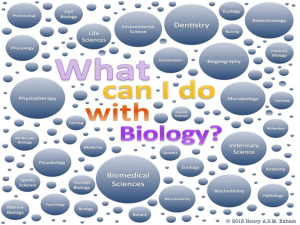Using Blood Tests to Identify Babies and Criminals
advertisement
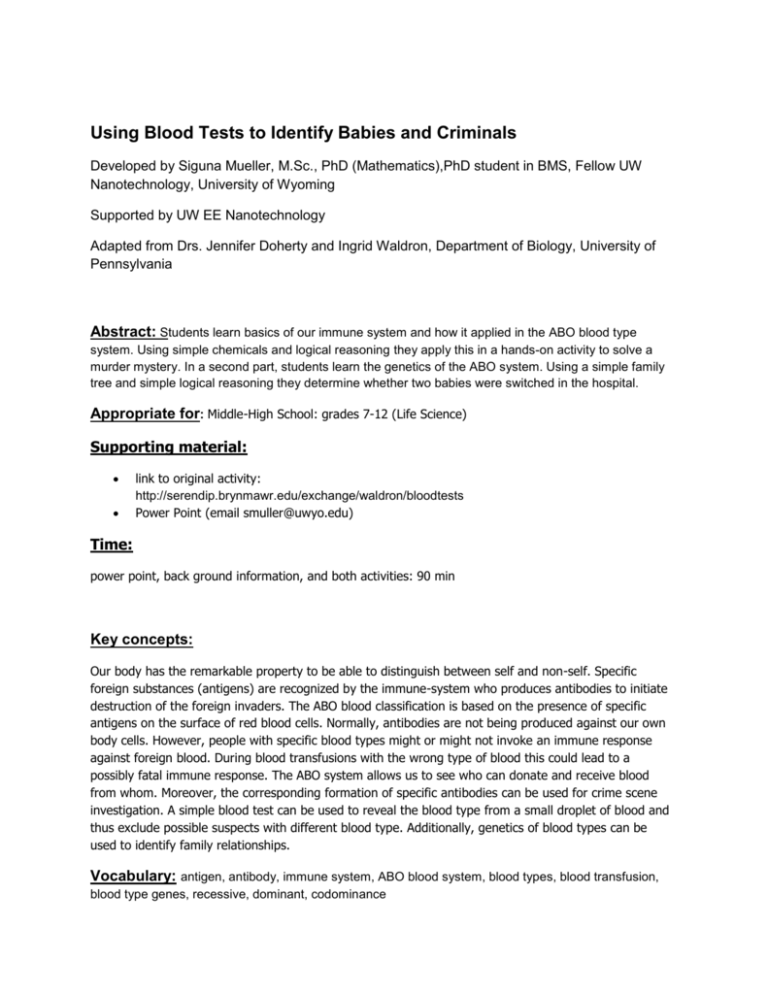
Using Blood Tests to Identify Babies and Criminals Developed by Siguna Mueller, M.Sc., PhD (Mathematics),PhD student in BMS, Fellow UW Nanotechnology, University of Wyoming Supported by UW EE Nanotechnology Adapted from Drs. Jennifer Doherty and Ingrid Waldron, Department of Biology, University of Pennsylvania Abstract: Students learn basics of our immune system and how it applied in the ABO blood type system. Using simple chemicals and logical reasoning they apply this in a hands-on activity to solve a murder mystery. In a second part, students learn the genetics of the ABO system. Using a simple family tree and simple logical reasoning they determine whether two babies were switched in the hospital. Appropriate for: Middle-High School: grades 7-12 (Life Science) Supporting material: link to original activity: http://serendip.brynmawr.edu/exchange/waldron/bloodtests Power Point (email smuller@uwyo.edu) Time: power point, back ground information, and both activities: 90 min Key concepts: Our body has the remarkable property to be able to distinguish between self and non-self. Specific foreign substances (antigens) are recognized by the immune-system who produces antibodies to initiate destruction of the foreign invaders. The ABO blood classification is based on the presence of specific antigens on the surface of red blood cells. Normally, antibodies are not being produced against our own body cells. However, people with specific blood types might or might not invoke an immune response against foreign blood. During blood transfusions with the wrong type of blood this could lead to a possibly fatal immune response. The ABO system allows us to see who can donate and receive blood from whom. Moreover, the corresponding formation of specific antibodies can be used for crime scene investigation. A simple blood test can be used to reveal the blood type from a small droplet of blood and thus exclude possible suspects with different blood type. Additionally, genetics of blood types can be used to identify family relationships. Vocabulary: antigen, antibody, immune system, ABO blood system, blood types, blood transfusion, blood type genes, recessive, dominant, codominance Learning objectives: Students learn the basics of how our immune system works. They learn the immunobiology of the ABO blood type system and why blood transfusions can be harmful. They will learn to distinguish between key concepts like antigens and antibodies and their role in blood typing. They will practice doing a (simulated) blood test and will learn how to interpret how different agglomeration patterns reveal the blood types. They will learn how the different blood types get inherited and which genotype gives which phenotype. Both skills, blood typing and understanding the genetics of the ABO system, are useful tools to solve crime. Lesson: Give a power point illustration that explains the background information (available upon request). The power point includes T/F questions and practice problems for the ABO system, as well as illustrations of different outcomes of blood tests, and practice problems relating to the genetics of blood types. Engaging questions; why are blood transfusions possibly fatal? How can the type of blood lead to the identification of a criminal? How can genetics help determine family relationships? Activity: Hand out page 5 from the University of Utah Teacher Guide (‘Were the babies switched?’); the beginning of the story is included on the ppt. Ask students to determine the correct family relationships. (Answers included). End the lesson with the practical hands-on activity ‘Who Killed Shamari Davis?’ It’s easy to follow the outline given in the University of Utah Teacher Guide (pp. 6-7). Materials needed for the practical activity: Synthetic blood of all four blood types (A, B, AB, and O) Synthetic A and B anti-serum Drop-controlled bottles or small bottles with droppers or pipets (8 per class) Microscope slides or plates for mixing blood and antibodies (6 per group) Toothpicks for mixing blood and anti-serum on plates (6 per group) Containers such as 20 oz. soda or water bottle to use as a trash so the students can throw away their disposables immediately after use to avoid contamination (1 per group) References: http://learn.genetics.utah.edu/ http://serendip.brynmawr.edu/exchange/waldron/bloodtests http://serendip.brynmawr.edu/sci_edu/waldron/pdf/BloodTypeGeneticsTeachPrep.pdf www.uwyo.edu/nanotech

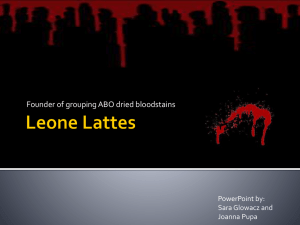




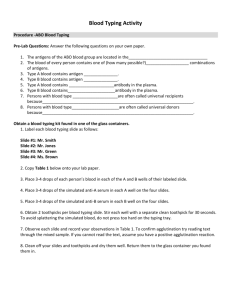
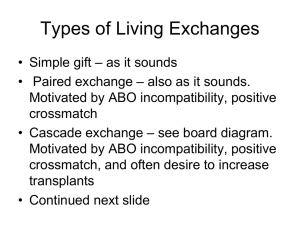
![Immune Sys Quiz[1] - kyoussef-mci](http://s3.studylib.net/store/data/006621981_1-02033c62cab9330a6e1312a8f53a74c4-300x300.png)


